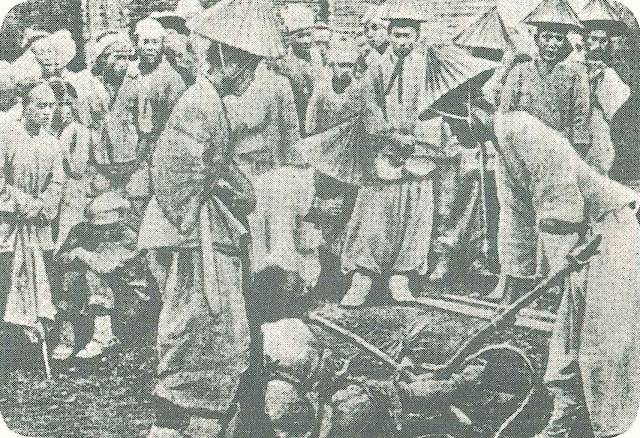In Chicago's red summer race riots, one black man became the victim of a white riot, and police officers stopped the white riot; it broke out on July 27, 1919 and ended on August 3, 1919; on Sunday, July 27, 1919, thousands of Chicagoans sought respite from the intense heat on the banks of Lake Michigan . Among them was Eugene Williams, a 17-year-old African-American. When he and a friend inadvertently crossed the invisible line separating the waterfront by race, a group of enraged whites, insulted by their transgression, began throwing rocks at them. One of them attacked Williams and drowned him. His murder, which was in Chicago, ignited the Red Summer of 1919. The riots that broke out along the Lake Michigan shore spread to areas of black housing on the south side of Chicago. White rioters, both children and adults, participated. In seven days of shootings, arson, and beatings, the race riots left 15 whites and 23 blacks dead. The police refused to arrest the whites who drowned and were powerless in the race riots, which were put down by the National Guard.
Racial violence erupted in the summer of 1919, from Chicago to Texas and Washington, DC. Rioters made deadly attacks; during the summer of 1919, white rioters attacked African-Americans in six cities. Deadly mass violence erupted that lasted for days. One of the worst, the white riots in Chicago, lasted for a week and claimed the lives of 38 men (23 black and 15 white). White rioters in Chicago and other cities (Charleston, South Carolina; Bisbee, Arizona; Longview, Texas; Washington, D.C.; and Knoxville, Tennessee) tried to drive African Americans out of industrial jobs and out of majority white neighborhoods. They punished black prosperity, alleged attacks on black men, and touted the protection of white women.
African-Americans were abused and slaughtered during the red summer. During the white riots in Chicago, local newspapers reported the false news that "a dozen retired Negro soldiers were terrorized by an armed mob at various places on the South Side this afternoon. In fact, the Chicago Police Department found it impossible to stop the white mob from attacking and tried to protect the black residents. Chicago was not the only problem. During all six of the Red Summer riots, local authorities found it impossible to restore law and order. In some cases, the police protected white rioters or joined in the attacks, contributing to the violence. Denied the protection of the law, African-Americans took up arms to defend themselves. Especially in Chicago and Washington, newly returned black veterans from World War I organized and carried out armed resistance. Calling themselves the new Negroes, black veterans and other African Americans rallied to stop the violence and to demand and win the constitutional rights long denied them. Many white bystanders falsely accused blacks of armed resistance to the white violence of the summer.
In 1919, a year of racial violence, key white-friendly federal agencies, especially Military Intelligence and the Bureau of Investigation (the forerunner of the FBI), responded to Red Summer. They determined that socialists and communists had encouraged African-Americans to take up arms. Agents mistakenly reported that a black revolution was imminent and that blacks across the country were conspiring to attack whites. In the eyes of the white regime, Red Summer was also a red hunt. It ignored the clear evidence that white mobs were initiating the violence. Military intelligence and the Bureau of Investigation began working with local governments and gun sellers across the country to stop the sale of weapons to African-Americans. Just as the new blacks fought the white mobs, they resisted this nationwide incitement to disarm.

























